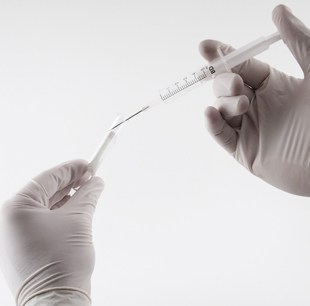HbA1c Test Fact Sheet
Being able to control blood sugar levels is an important way to maintain health. As people age, they lose their ability to control blood sugar and become more susceptible to poor glucose tolerance and diabetes. Measuring a body’s level of sugar modification on hemoglobin is one way to detect declining function of the body’s ability to use insulin for sugar regulation. This is done with a HbA1c test. The level of HbA1c indicates blood sugar control. A high HbA1c score means that a person’s body has been exposed to a large amount of sugar and is at a higher risk for type 2 diabetes. Diabetes is a serious condition and may cause heart disease or premature mortality. The early detection of sugar regulation concerns may help to prevent diabetes and future complications.
Overview of the Test
The HbA1c (hemoglobin A1C) test assesses blood sugar control. Red blood cells transport oxygenated hemoglobin molecules with glucose connected to them throughout the body. A HbA1c score is shown as a percentage that indicates how many hemoglobin molecules have attached glucose. When the levels are raised above a normal range of 4 to 5.7 percent, function is impaired.
The test is a screening tool that can identify people who are at risk for developing diabetes. The higher people’s scores, the more at risk they are for stroke, neuropathy, and eye, heart or kidney disease. Knowing scores are high may help people correct the problem before there is irreparable damage. Regular screening is important because the longer levels stay elevated, the greater the risk. Doctors may also use the test to monitor how their patients with diabetes are doing in terms of blood sugar control.
Evidence and Science behind the Test
Studies show that the HbA1c test is effective for predicting health risks. Multiple studies conducted in the 70s indicate that high HbA1C and blood sugar levels correlate to an elevated heart disease risk.
A study on men with and without diabetes, found that a 1 percent increase in HbA1c was associated with a 28 percent increase in mortality rate.
How is it done?
Doctors require a blood sample to test for HbA1c. Sometimes, a simple finger stick is all health care professionals need to obtain a blood sample. Other times, blood must be taken from a vein, usually in the arm.
A normal score is below 5.7 percent. A score of 5.7 to 6.4 percent indicates pre-diabetes. A score of 6.5 percent or higher indicates diabetes.
When and How Often?
The American Diabetes Association suggests that people get HbA1c tests every three years starting at age 45. People who have risk factors for diabetes may need tests annually. Risk factors include a close relative with diabetes, hypertension, being overweight, and having high cholesterol.
Who does it?
GPs
Cost
A HbA1c test does not cost very much. The lab fees may be between $22 and $65, plus another $10 to $20 to take blood. Insurance may cover these costs.
References
Last reviewed 26/Feb/2014
